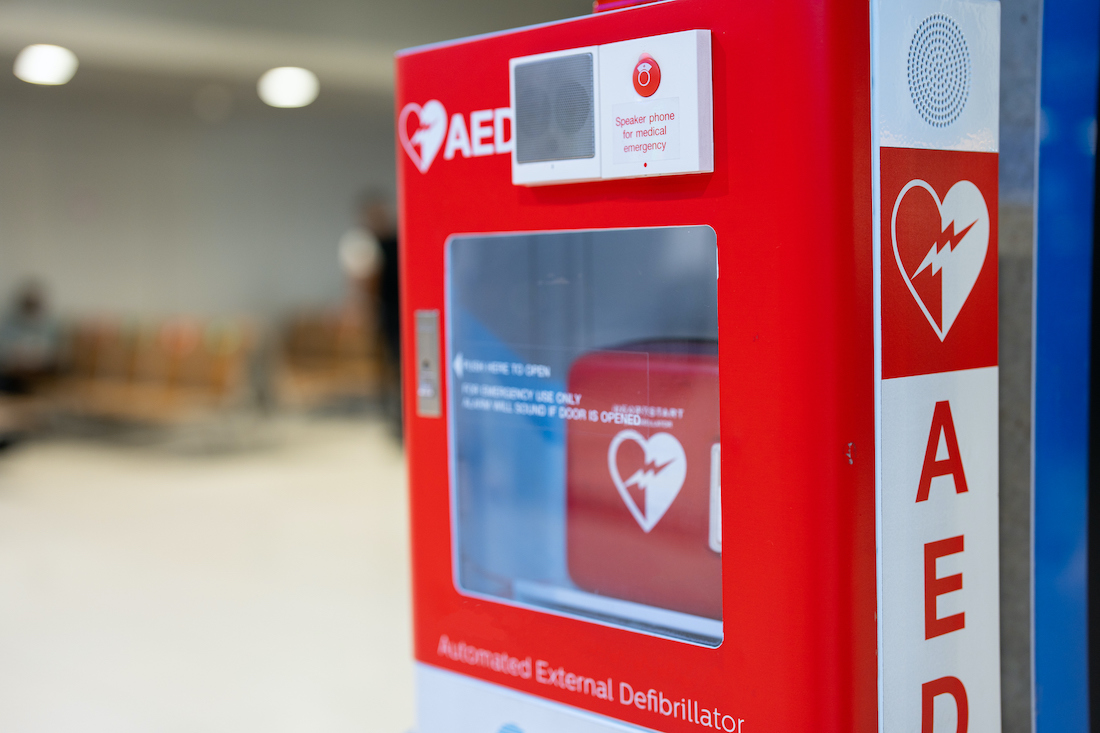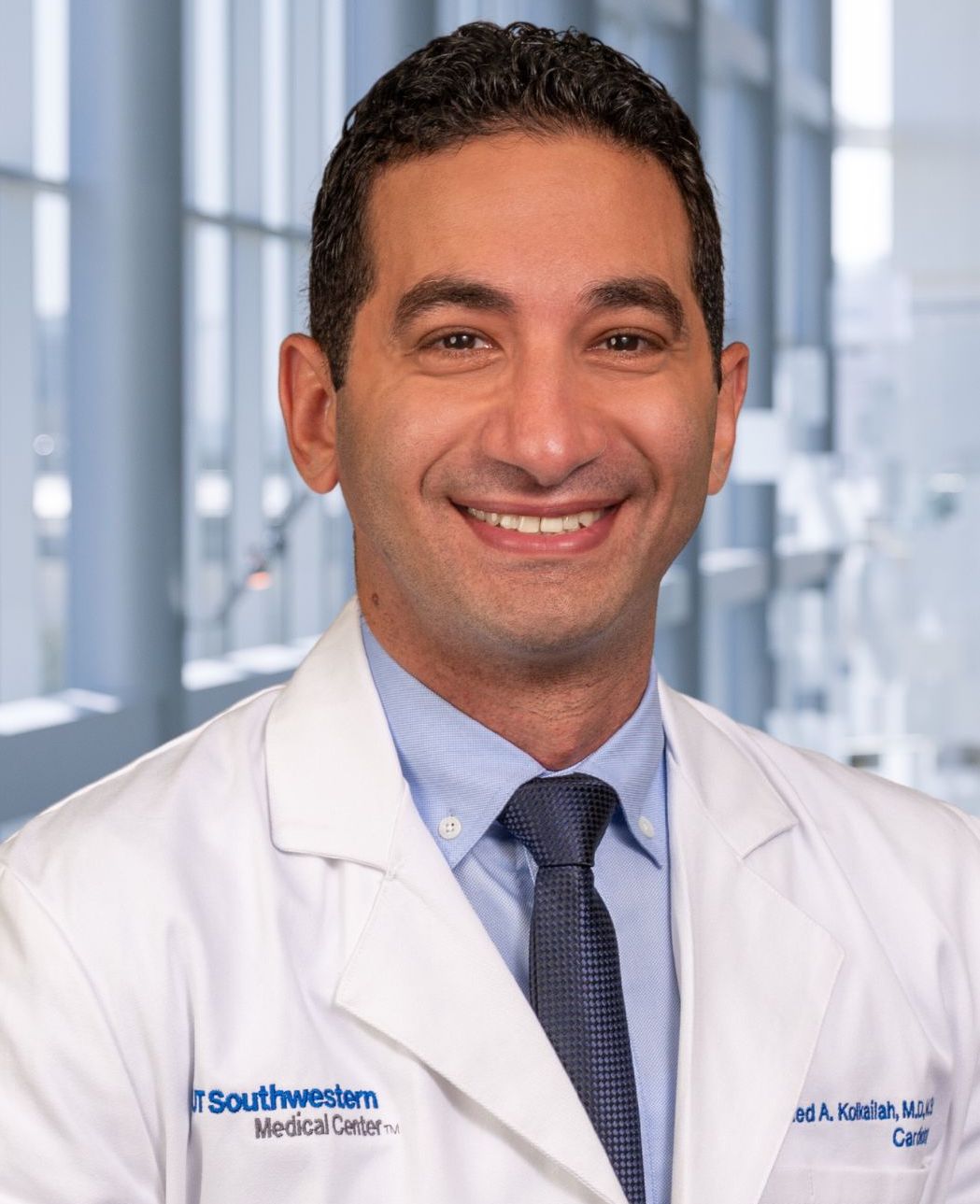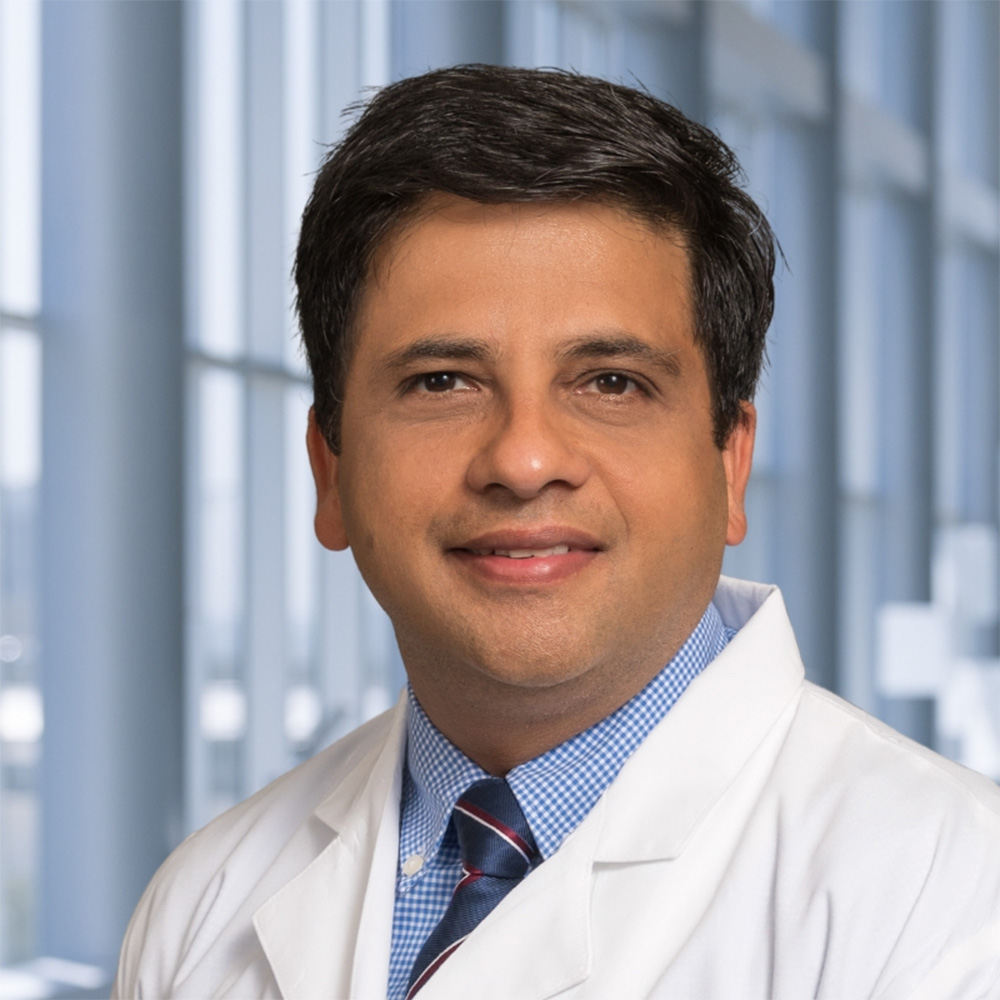AEDs often not used in cardiac arrest, even where they’re mandated
The devices have saved high-profile athletes' lives, but utilization by bystanders at recreational facilities is low, UTSW researchers find

DALLAS – Feb. 08, 2024 – Automated external defibrillators (AEDs) are underutilized during cardiac arrest episodes despite laws in some states requiring their availability in high-risk areas such as athletic facilities, researchers at UT Southwestern Medical Center found. The devices can save lives by shocking the heart back into normal rhythm.
According to the study, published in JAMA Internal Medicine, state mandates have not improved bystander AED use at recreational facilities.

“Nearly half of all out-of-hospital cardiac arrest victims in our study had an initial shockable rhythm, which is a potentially fatal heart rhythm that can be restored back to normal with the prompt and appropriate use of a defibrillator,” said study first author Ahmed A. Kolkailah, M.D., M.Sc., a fellow in UT Southwestern’s Division of Cardiology. “Despite their critical value, AEDs were used by bystanders in fewer than 20% of those incidents, and this pattern of AED use was similar in states with and without laws mandating AEDs at athletic facilities.”
In recent years, several well-known athletes and many amateurs have benefited from the availability of AEDs, including pro football player Damar Hamlin after his collapse from cardiac arrest during a game in January 2023.
To better understand the pattern of bystander AED use across states and whether this pattern differs based on laws mandating their availability at athletic facilities, UTSW researchers studied data from the Cardiac Arrest Registry to Enhance Survival (CARES) from 2013 through 2021, measuring bystander AED application and survivor outcomes for cardiac arrest cases occurring at recreational facilities. Included in this category were gymnasiums and fitness facilities as well as campsites, beaches, public parks, and trails.
Dr. Kolkailah and his colleagues excluded incidents witnessed by a first responder; those in one state that didn’t pass an AED law until 2020; and those in states with fewer than five cardiac arrest cases. The study included 4,145 cases at recreational facilities in 13 states with AED laws and 5,145 cases in 27 states without AED laws.
In states with mandates, AEDs were used in 19% of all recreational facility cardiac arrests. Median rate of survival to hospital admission for patients in those states was 44.5%, with 31% surviving to discharge. The rates were nearly the same in states without mandates, where AEDs were used in 18.2% of cardiac arrest cases. Median survival to hospital admission was 45% and the rate to discharge was 28.4%.

“The data similarities between states with AED mandates and those without suggest that improving bystander AED use will need to go beyond legislative measures,” said senior author Saket Girotra, M.D., Associate Professor in the Division of Cardiology in the Department of Internal Medicine, who mentored Dr. Kolkailah on the study. “Even the best-performing state with mandates in place had AED usage in just 28.8% of cardiac arrest cases occurring at recreational facilities.”
The researchers recommend collaboration between medical personnel and athletic/recreational facility staff to support AED awareness and usage.
“College and professional athletes have the advantage of highly skilled medical professionals on-site who know where to find the AED and how to use it, but that’s not the case at many recreational facilities where often the initial intervention is from a nonmedical bystander,” Dr. Kolkailah said. “Collective efforts are needed, such as ensuring AEDs are available with easy-to-follow signs and directions, guidance from dispatchers in case of an emergency while professional help arrives, and continued education on prompt and appropriate use of AEDs without fear of causing harm – much like we’ve done over the years with CPR.”
AEDs are not required at recreational facilities in Texas. However, the state mandates them at schools, athletic practice facilities, and competitions as well as in dentist offices and nursing homes.
Other UTSW researchers who contributed to this study were Anezi Uzendu, M.D., Assistant Professor in the Division of Cardiology, and Qiang Li, M.Sc., Biostatistical Consultant.
Researchers in the study were supported by the National Heart, Lung, and Blood Institute of the National Institutes of Health under award numbers T32HL125247, R01HL160734, R01HL166305, and R56HL158803.
About UT Southwestern Medical Center
UT Southwestern, one of the nation’s premier academic medical centers, integrates pioneering biomedical research with exceptional clinical care and education. The institution’s faculty members have received six Nobel Prizes and include 26 members of the National Academy of Sciences, 21 members of the National Academy of Medicine, and 13 Howard Hughes Medical Institute Investigators. The full-time faculty of more than 3,100 is responsible for groundbreaking medical advances and is committed to translating science-driven research quickly to new clinical treatments. UT Southwestern physicians provide care in more than 80 specialties to more than 120,000 hospitalized patients, more than 360,000 emergency room cases, and oversee nearly 5 million outpatient visits a year.
